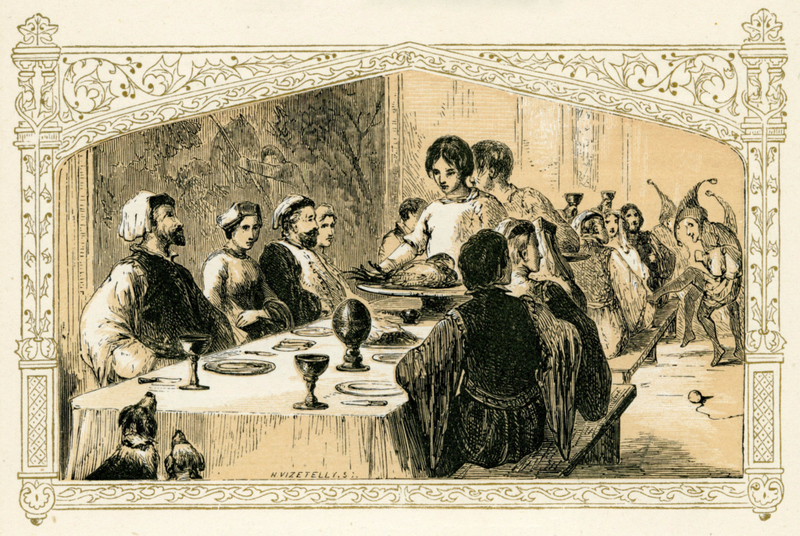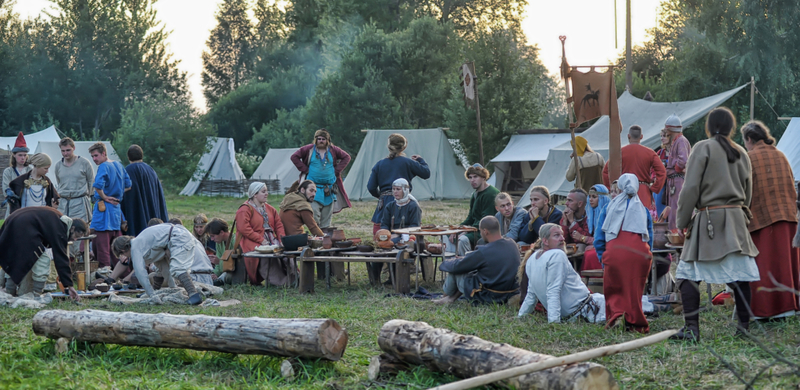Christmas, as we know it, is associated with gift-giving, family, and joy. But how was the festive holiday celebrated in the Middle Ages? What customs took place? What foods were eaten? If you’re ever in the mood to host Christmas as it was observed and celebrated in the Middle Ages — we’ve got you covered.
Take it Easy
A Medieval Christmas wasn’t the celebration we have become accustomed to today, so if you’re looking to throw a party – take it easy! Though Christmas was meaningful, Easter was far more significant; it was far more celebrated than Christmas today.
What’s on the Menu?
In the 13th century, boar’s head was considered a Christmas delicacy. Bon appetite? Along with boar beef, geese, bread, cheese, ale, and wine were served. Christmas was also considered a time for charity and sharing food. During the holiday season in 1314, tenants at Somerset received bread, beef, chicken soup, and as much beer as they wanted for the day.

Feasting and Then Fasting
For those who celebrated Christmas, it wasn’t just one day – it was a season. Spread out for at least 12 days between December 25th to January 6th. It sounds like a fun time to celebrate, right? Well, Christmas was preceded by a month of fasting, in the season known as Advent. Advent was considered a special preparation for God’s appearance and was supposed to be a time of exile, longing, and repentance. Would you be able to follow the medieval saints and avoid the temptation? If that’s too much work, consider keeping rich foods off the menu. Fasting was a central part of that period in Europe.
Deck the Halls
When it comes to Christmas the way we know it, evergreen trees have become an integral ritual in many cultures. But Christmas trees in medieval times are hard to trace. It seems like the popularity of the tree only peaked in the 19th century. A Middle Ages alternative to evergreen trees can be decorating your house with candles, ivy and, holly.
